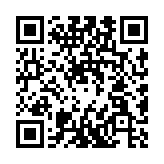templates.Current
Syntax
Returns
This function is experimental and subject to change.
The templates.Current function provides introspection capabilities, allowing you to access details about the currently executing templates. This is useful for debugging complex template hierarchies and understanding the flow of execution during rendering.
Methods
- Ancestors
- (
tpl.CurrentTemplateInfos) Returns a slice containing information about each template in the current execution chain, starting from the parent of the current template and going up towards the initial template called. It excludes any base template applied viadefineandblock. You can chain theReversemethod to this result to get the slice in chronological execution order. - Base
- (
tpl.CurrentTemplateInfoCommonOps) Returns an object representing the base template that was applied to the current template, if any. This may benil. - Filename
- (
string) Returns the absolute path of the current template. This will be empty for embedded templates. - Name
- (
string) Returns the name of the current template. This is usually the path relative to the layouts directory. - Parent
- (
tpl.CurrentTemplateInfo) Returns an object representing the parent of the current template, if any. This may benil.
Examples
The examples below help visualize template execution and require a debug parameter set to true in your site configuration:
params:
debug: true
[params]
debug = true
{
"params": {
"debug": true
}
}
Boundaries
To visually mark where a template begins and ends execution:
{{ define "main" }}
{{ if site.Params.debug }}
<div class="debug">[entering {{ templates.Current.Filename }}]</div>
{{ end }}
<h1>{{ .Title }}</h1>
{{ .Content }}
{{ if site.Params.debug }}
<div class="debug">[leaving {{ templates.Current.Filename }}]</div>
{{ end }}
{{ end }}Call stack
To display the chain of templates that led to the current one, create a partial template that iterates through its ancestors:
{{ with templates.Current }}
<div class="debug">
{{ range .Ancestors }}
{{ .Filename }}<br>
{{ with .Base }}
{{ .Filename }}<br>
{{ end }}
{{ end }}
</div>
{{ end }}Then call the partial from any template:
{{ if site.Params.debug }}
{{ partial "template-call-stack.html" . }}
{{ end }}The rendered template stack would look something like this:
/home/user/project/layouts/_partials/footer/copyright.html
/home/user/project/themes/foo/layouts/_partials/footer.html
/home/user/project/layouts/page.html
/home/user/project/themes/foo/layouts/baseof.htmlTo reverse the order of the entries, chain the Reverse method to the Ancestors method:
{{ with templates.Current }}
<div class="debug">
{{ range .Ancestors.Reverse }}
{{ with .Base }}
{{ .Filename }}<br>
{{ end }}
{{ .Filename }}<br>
{{ end }}
</div>
{{ end }}VS Code
To render links that, when clicked, will open the template in Microsoft Visual Studio Code, create a partial template with anchor elements that use the vscode URI scheme:
{{ with templates.Current.Parent }}
<div class="debug">
<a href="vscode://file/{{ .Filename }}">{{ .Name }}</a>
{{ with .Base }}
<a href="vscode://file/{{ .Filename }}">{{ .Name }}</a>
{{ end }}
</div>
{{ end }}Then call the partial from any template:
{{ define "main" }}
<h1>{{ .Title }}</h1>
{{ .Content }}
{{ if site.Params.debug }}
{{ partial "template-open-in-vs-code.html" . }}
{{ end }}
{{ end }}Use the same approach to render the entire call stack as links:
{{ with templates.Current }}
<div class="debug">
{{ range .Ancestors }}
<a href="vscode://file/{{ .Filename }}">{{ .Filename }}</a><br>
{{ with .Base }}
<a href="vscode://file/{{ .Filename }}">{{ .Filename }}</a><br>
{{ end }}
{{ end }}
</div>
{{ end }}